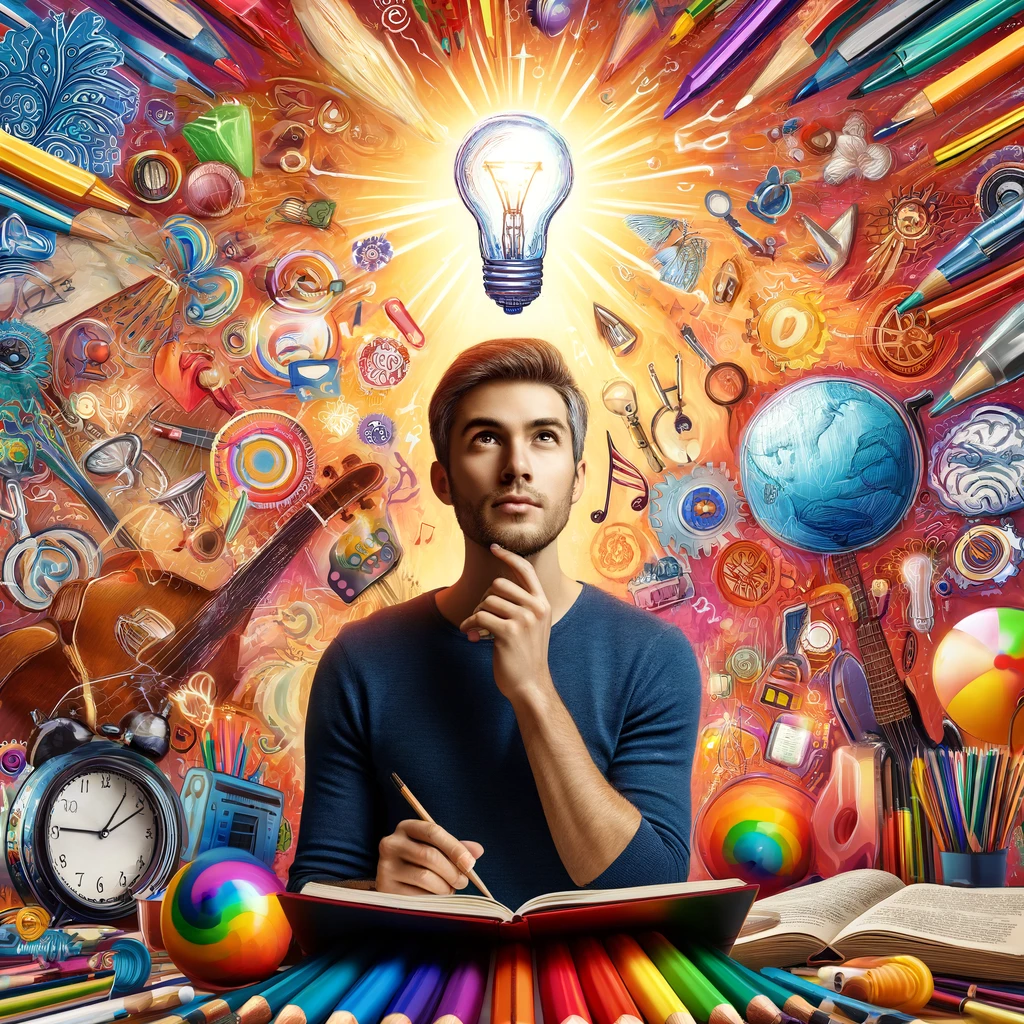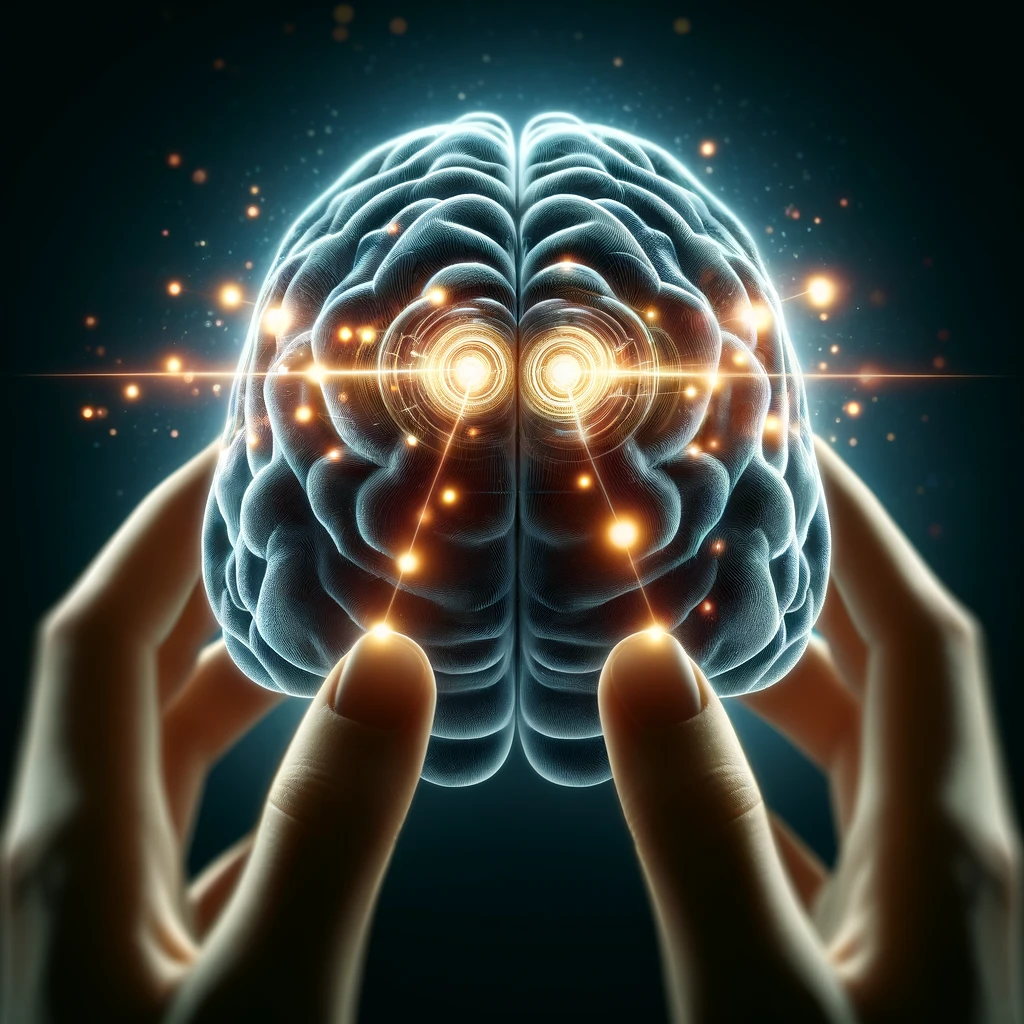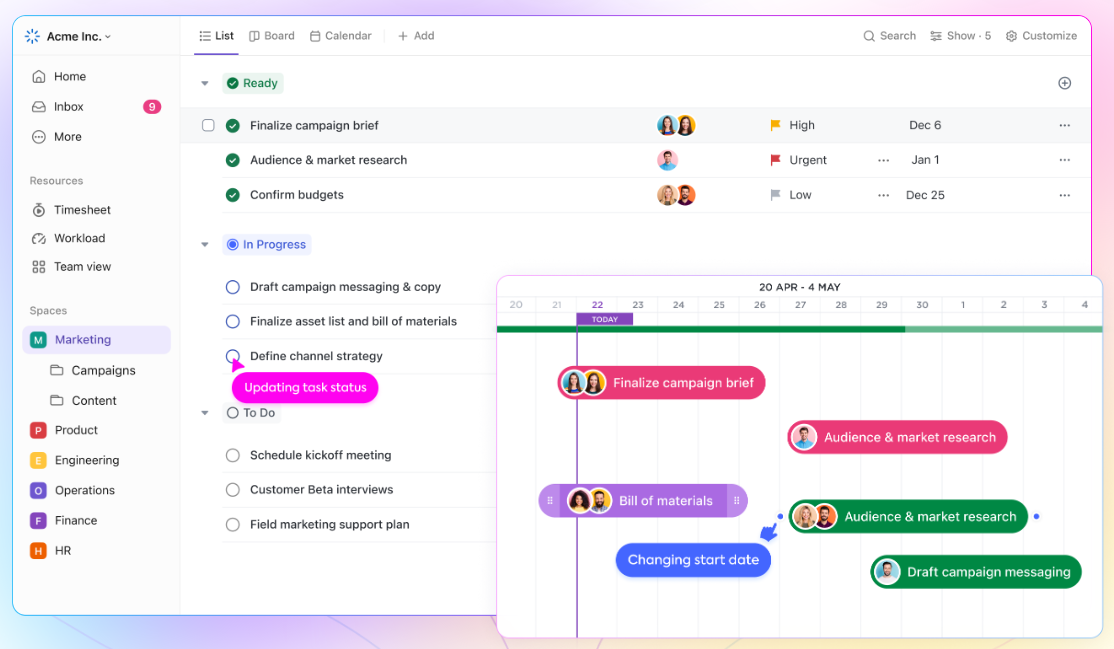A Step-by-Step Guide to Becoming More Creative
Understanding Creativity
Creativity is the ability to generate new and valuable ideas, solutions, or products. It involves various cognitive functions such as divergent thinking, convergent thinking, and associative thinking. Divergent thinking generates multiple solutions to a problem, convergent thinking narrows those solutions to find the best one, and associative thinking makes connections between seemingly unrelated ideas, leading to innovative breakthroughs.
The Role of the Brain
The brain’s default mode network (DMN), active during restful wakefulness and daydreaming, is crucial for creativity. This network allows for mind-wandering and the formation of spontaneous thoughts, leading to creative insights. The prefrontal cortex controls and refines these ideas, ensuring they are feasible and valuable.

Factors Influencing Creativity
- Environment: A stimulating environment that encourages exploration and risk-taking can enhance creativity. Workplaces like Google’s “20% time” program allowed employees to spend 20% of their time on personal projects, leading to innovations such as Gmail and Google News.
- Personality Traits: Openness to experience is strongly associated with creativity. People high in this trait are more willing to explore new ideas and experiences. Other contributing traits include intrinsic motivation, curiosity, and persistence.
- Mindfulness and Meditation: Practices like mindfulness and meditation improve focus and allow thoughts to flow without judgment. Open monitoring meditation, where thoughts and feelings pass without reacting, is particularly beneficial for divergent thinking.
- Sleep and Relaxation: Adequate sleep and relaxation are crucial for creativity. Sleep provides an incubation period where the brain forms new connections and insights. Relaxation and engaging in unrelated activities, such as going for a walk, also stimulate creative thinking.
Strategies to Enhance Creativity
- Encourage Daydreaming: Allow your mind to wander and daydream to lead to creative insights. This unfocused state helps the brain form new associations and ideas.
- Create Non-Time: Set aside periods where there are no pressing concerns or deadlines. This “non-time” allows for uninterrupted focus and exploration of new ideas.
- Work with Constraints: Paradoxically, constraints can enhance creativity. Working within specific limitations forces creative problem-solving and leads to more innovative solutions.
- Collaborate and Share Ideas: Collaboration enhances creativity by exposing individuals to diverse perspectives and feedback. Sharing ideas and working together lead to new and improved creative outcomes.
- Maintain a Positive Mood: Positive emotions and a sense of well-being are linked to enhanced creativity. Engage in activities that boost mood, such as exercise and practicing gratitude, to maintain a creative mindset.
How to Become More Creative
- Embrace Diverse Experiences: Exposure to new experiences and knowledge fuels creativity. Traveling, learning new skills, and reading about different subjects provide fresh perspectives and ideas.
- Practice Mindfulness and Meditation: These practices help clear your mind and improve focus, making it easier to think creatively.
- Create a Routine: Set aside dedicated time for creative activities. Even short, regular periods of creative work significantly enhance your creative abilities.
- Allow for Incubation: Take breaks and engage in activities that allow your mind to wander. This helps your subconscious process ideas and come up with creative solutions.
- Experiment and Take Risks: Don’t be afraid to try new things and make mistakes. Creativity often involves trial and error, and learning from failures can lead to great breakthroughs.
- Use Mind Maps: Visual tools like mind maps help organize and connect ideas, making it easier to see relationships and come up with innovative solutions.
Realizing Difficult Tasks at Work with Creativity
- Break Down Problems: Large, complex tasks can be intimidating. Break them down into smaller, more manageable parts. This not only makes the task less overwhelming but also provides more opportunities for creative solutions.
- Seek Multiple Perspectives: Engage with colleagues to gain different viewpoints on a problem. This can uncover solutions you may not have considered on your own.
- Experiment and Prototype: Don’t be afraid to test out different approaches. Creating prototypes or simulations can help visualize potential solutions and refine them through iterative testing.
- Use Creative Thinking Techniques: Techniques like brainstorming, SCAMPER (Substitute, Combine, Adapt, Modify, Put to another use, Eliminate, and Reverse), and lateral thinking can stimulate new ideas and approaches to difficult tasks.
- Create an Inspiring Environment: A workspace that inspires creativity can make a big difference. Ensure your environment is conducive to creative thinking by reducing clutter, adding elements that inspire you, and minimizing distractions.
- Allocate Time for Creative Thinking: Set aside specific times for brainstorming and creative thinking, separate from routine work tasks. This dedicated time can help you approach problems with a fresh perspective.
By understanding and leveraging these factors and strategies, you can foster a more creative environment and enhance your creative output. Whether solving complex problems at work or pursuing artistic endeavors, enhancing your creativity can lead to more innovative and fulfilling outcomes.



